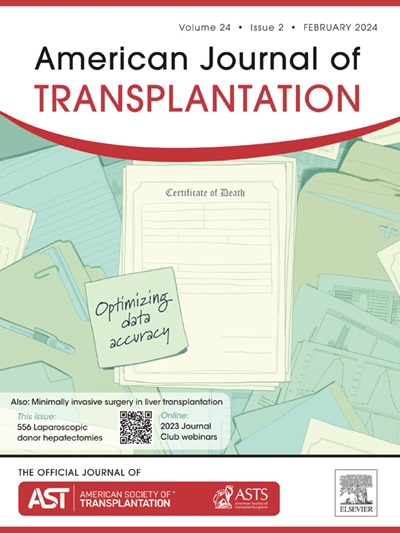Practical and ethical considerations in kidney paired donation and emerging liver paired exchange.
IF 8.9
2区 医学
Q1 SURGERY
引用次数: 0
Abstract
Since the first kidney paired donation (KPD) transplant in the United States in 1999, the volume and scope of KPD has expanded substantially, accounting for nearly 20% of living donor kidney transplants in 2021-2022. Our review article discusses the practical and ethical issues specific to paired donor exchange that patients, transplant centers, and exchange programs commonly encounter. Access to paired donor exchange and education of candidates regarding the potential benefits, risks, and logistics of KPD are important considerations. Transplant centers and patients must consider practical issues including wait-times, allocation and matching strategies, assessment of organ quality, complex donors, cold ischemia time, and risks of broken chains. Protections available to donors from current KPD programs, the potential psychosocial effects, and the ethical concerns related to variable access and the proprietary nature of private exchange programs are also discussed. More detailed, timely data collection at a national level, and ability to merge national data with individual donor exchange registries will enable the analysis of the impact and outcomes of future trends in paired donation. KPD experience and key concepts may inform liver paired exchange, which has been employed internationally to expand living donor liver transplantation and is emerging in the United States.肾脏配对捐献和新兴的肝脏配对交换的实践和伦理考虑。
自1999年美国首例肾脏配对捐赠(KPD)移植以来,KPD移植的数量和范围大幅扩大,在2021-2022年占活体肾脏移植的近20%。我们的综述文章讨论了患者、移植中心和交换项目经常遇到的配对供体交换的实际和伦理问题。配对献血者交换的机会以及对候选人进行有关KPD潜在利益、风险和后勤的教育是重要的考虑因素。移植中心和患者必须考虑实际问题,包括等待时间、分配和匹配策略、器官质量评估、复杂的供体、冷缺血时间和链断裂的风险。本文还讨论了当前KPD项目对捐赠者的保护,潜在的社会心理影响,以及与私人交流项目的可变访问和专有性质相关的伦理问题。在国家一级收集更详细、更及时的数据,以及将国家数据与个人捐助者交流登记册合并的能力,将有助于分析配对捐赠未来趋势的影响和结果。KPD的经验和关键概念可以为肝脏配对交换提供信息,这种交换已在国际上用于扩大活体肝移植,并在美国兴起。
本文章由计算机程序翻译,如有差异,请以英文原文为准。
求助全文
约1分钟内获得全文
求助全文
来源期刊
CiteScore
18.70
自引率
4.50%
发文量
346
审稿时长
26 days
期刊介绍:
The American Journal of Transplantation is a leading journal in the field of transplantation. It serves as a forum for debate and reassessment, an agent of change, and a major platform for promoting understanding, improving results, and advancing science. Published monthly, it provides an essential resource for researchers and clinicians worldwide.
The journal publishes original articles, case reports, invited reviews, letters to the editor, critical reviews, news features, consensus documents, and guidelines over 12 issues a year. It covers all major subject areas in transplantation, including thoracic (heart, lung), abdominal (kidney, liver, pancreas, islets), tissue and stem cell transplantation, organ and tissue donation and preservation, tissue injury, repair, inflammation, and aging, histocompatibility, drugs and pharmacology, graft survival, and prevention of graft dysfunction and failure. It also explores ethical and social issues in the field.

 求助内容:
求助内容: 应助结果提醒方式:
应助结果提醒方式:


